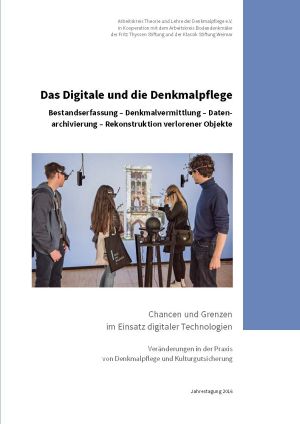
How to Cite
License

This work is licensed under a Creative Commons Attribution-ShareAlike 4.0 International License.
Published
Das Digitale und die Denkmalpflege
Bestandserfassung – Denkmalvermittlung – Datenarchivierung – Rekonstruktion verlorener Objekte
The ‘digital revolution’ is now in full swing. For heritage conservation, digital tools have opened new perspectives, finding application in the interactive visualization of past situations, the monitoring of threatened sites and artefacts, or the complex cross-referencing of heterogeneous collections of knowledge. At the same time, the limits and unsolved problems associated with using digital technologies are also becoming more apparent, for example with regard to maintaining the rapidly-growing volumes of data being generated.
And yet with digitization, we are not dealing primarily with a ‘technical’ innovation. Thus the effort to conserve digital heritage, including documenting, researching and publishing cultural assets, will transform more than just the institution of the museum. The new abundance of digitally-generated images can also be seen to be changing the standards of the scientific and academic discipline. A further and as yet underappreciated aspect of the digital revolution is the way it is rearranging the foci of attention in the knowledge ‘market’.
Perhaps the most noticeable consequence of digitization’s promise of exact and comprehensive reproduction is the knee-jerk insistence, following every instance of the spectacular destruction of a famous monument, on creating a reconstruction. Here it is clear that an affinity for reconstruction is inherent in the digital, to the extent that its primary feature is its capacity to translate all information into binary code, to capture and copy exactly, supposedly without loss of detail. In the digital age, the distinction between original and copy will therefore lose relevance – at the cost of a total manipulability of data, and of reality.






